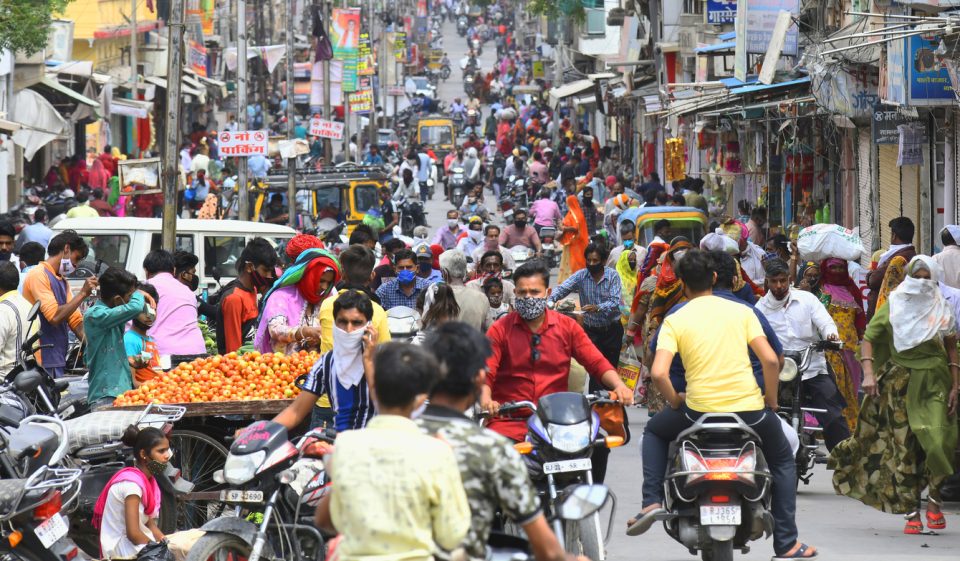
Fourth wave fears loom as April sees gradual rise in COVID cases
Though the increase is minor, the havoc caused by the second wave, with the Delta variant, has scarred the minds of people

With COVID cases increasing again in some states, fears of a fourth wave have started knocking on the door again. Reports of some children and teachers testing positive in Noida and Ghaziabad schools, and the confirmation of an Omicron XE variant case each in Mumbai and Gujarat, have raised concern. Further, the number of daily fresh cases has crossed 1,000 in the past few days after receding sharply in February and March, spurring fears that India could witness a fourth wave of the pandemic.
Keeping this in mind, Union Health Secretary Rajesh Bhushan last week directed five states to take necessary actions to curb the spread of the virus. In a letter to Delhi, Haryana, Kerala, Maharashtra and Mizoram, Bhushan asked them to maintain a strict watch and take pre-emptive action if required owing to the rise in the number of cases.
Also read: People affected by COVID more likely to develop diabetes; here’s why
States have been advised to follow the five-fold strategy — test-track-treat-vaccination and adherence to COVID appropriate behaviour with continued focus on monitoring clusters of new cases and required containment efforts.
Cases zooming
Mumbai on Wednesday reported 73 new COVID cases, the highest in a day after March 17 this year, taking the overall tally to 10,58,567. However, with no fresh fatality due to the disease, the death toll in Mumbai remained unchanged at 19,560, a Brihanmumbai Municipal Corporation bulletin said.
Karnataka Health and Medical Education Minister K Sudhakar said the state is prepared for a fourth wave, should it happen. “There are predictions of a fourth wave between June and September. Karnataka is prepared to face and control the wave,” he said. The state government is also looking at imposing new rules for foreign travellers from eight countries — including China, Hong Kong, South Korea, the UK and Germany — where the number of XE cases is rising.
Also read: Omicron and Delta symptoms are different, study confirms
Serum Institute of India CEO Adar Poonawalla, meanwhile, said in an interview to Zee News that India is better prepared to face it now than it was in 2020.
The situation elsewhere
This comes even as India has lifted all COVID restrictions from March 31. The massive rise in cases in China, the US and other South Asian countries is also a matter of concern as, in the past also, while these countries were peaking, India was COVID-free. When these countries started seeing a decline in coronavirus cases, India began witnessing a rise. Also, a study conducted by IIT-Kanpur suggests that India will be hit by the COVID fourth wave in June 2022.
In Delhi-NCR, three students enrolled at two private schools in Ghaziabad tested positive, while 16 cases, including three teachers, were reported from a school in Noida. One Ghaziabad school has announced three days’ closure while the school in Noida has moved to online mode for a week in a bid to control the spread of the infection. Asked if the children have been diagnosed with the latest XE variant of the virus, a senior doctor said the details are yet to be ascertained.
In Mumbai, though, a confirmed case of the XE variant was detected. The 67-year-old Mumbai resident tested positive while he was on a visit to Gujarat’s Vadodara. He was moved to home quarantine following the report.
‘Maintain precautions’
Though the increase is minor, the havoc caused by the second wave, with the Delta variant, has scarred the minds of the people. On the positive side, the third Omicron wave was quite weak in terms of fatalities. With a large number of Indians already vaccinated, the spread of new variants could be checked. But caution remains the operative word to prevent the spread of the pandemic.
Prime Minister Narendra Modi, too, stressed on this during his address to the people via a video conference last week. He cautioned people to not let their guards down as the virus is a bahurupiya (one that changes form). “COVID has not gone away and it is evolving quickly to come up with new forms,” he added.
Union Health Minister Mansukh Mandaviya also stressed upon the need to maintain precautions as the pandemic is not over yet. The new XE variant is just another form of Omicron, and its case was detected in January also before recently being found in Gujarat, he said.
The XE mutant of Omicron — first detected in the UK — may be more transmissible than any strain of COVID, the World Health Organisation said last week.
Over 1,000 new cases
On Friday, India saw a single-day rise of 1,109 new coronavirus infections, taking the total tally of COVID cases to 4,30,33,067, while the active cases have further declined to 11,492, according to the Union Health Ministry. However, there was a marginal dip in the number of daily cases on Wednesday — 1,088 new coronavirus infections were recorded, according to Health Ministry data. The active cases comprise 0.03 per cent of the total infections, while the national COVID recovery rate remained at 98.76 per cent, the ministry said.With COVD cases increasing again in some states, fears of a fourth wave have started knocking on the door again. Reports of some children and teachers testing positive in Noida and Ghaziabad schools, and the confirmation of an Omicron XE variant case each in Mumbai and Gujarat, have raised concern. Further, the number of daily fresh cases has crossed 1,000 in the past few days after receding sharply in February and March, spurring fears that India could witness a fourth wave of the pandemic.

